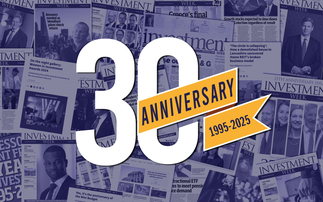David Stevenson asks why finance professionals continue to charge such high fees for their services in the face of massive technological change.
It is an oft-repeated truism that big technology changes are immensely disruptive, although wider society does eventually tend to benefit over a much longer period.
If we accept this, then what went wrong with the finance and investment sector? In reality, very little has changed for the average end user of finance, even after decades of profound technological change.
In the vast majority of other industries, we can see an established pattern whereby a few innovators capture early profits, which are then arbitraged away by intense competition, with only a few dominant firms retaining a semi-monopolistic position as technology gains are captured by the 'commons'. The travel sector and the growth of digital channels and low-cost airlines are a classic example of this change.
High fees
In finance there has been a tiny decline in the number of high street IFAs and the closure of a few bank branches, but otherwise the industry seems to have actually grown even bigger. Direct digital channels and the online stockbrokers have carved out a niche for themselves, but finance and investment does not really look that different.
Anyone looking to understand why investment in particular has not changed that much would be well advised to hunt down an excellent academic paper by Thomas Philippon of New York University called: Finance vs Wal-Mart: Why are Financial Services so Expensive?
It explains why finance professionals have continued to extort/charge such high fees for their services in the face of massive technological change.
Unit costs
Philippon suggests the total compensation of financial intermediaries (profits, wages, salary and bonuses) as a fraction of US GDP is at an all-time high, around 9% of GDP. The US-based academic estimates historically, the unit cost of intermediation has been somewhere between 1.3% and 2.3% of assets.
Yet, peculiarly, this unit cost has actually been trending upwards since 1970 – or as Philippon puts it "the finance industry of 1900 was just as able as the finance industry of 2010 to produce loans, bonds and stocks, and it was certainly doing it more cheaply. This is counter-intuitive, to say the least."
Philippon names hugely intensified trading activities as one excuse for this upwards drift (foreign exchange trading volumes are apparently more than 200 times larger today than in 1977).
I would also suggest any savings from lower trading costs have almost completely been eaten away by the more intensive regulatory burden. Crucially, this increased liquidity has not necessarily provided any society-wide benefit.
Philippon finds "no evidence that increased liquidity has led to better prices or to more insurance." The cost of active fund management is still large – and fund managers are still spectacularly overpaid.
His devastating conclusion is that "the finance industry's share of GDP is about 2 percentage points higher than it needs to be and this would represent an annual misallocation of resources of about $280bn for the US alone".
Innovation
To be fair, the finance industry does serve a hugely valuable role, not least in safeguarding our accumulated liquid wealth. But I also think too many of the professionals in the sector are extravagantly overpaid.
I would also observe profound change is at long last coming, with an inevitable impact on costs. In the US, in particular, we are seeing some fascinating first moves.
The rise of robo-advisers is one small step forward, as is the push to capture top-down asset allocation led portfolio intelligence. Technological change is also creeping into even more surprising spaces like automated risk management.
How can asset managers address the advice gap challenge
On this score, check out vestfin.com. This has been incubated by tech accelerator Y-Combinator and allows (US) investors to use an online interface to manage their downside protection on any existing funds or stock-led portfolios.
Combine this form of automated tactical risk management with online ETF-led portfolios and then mix in a dash of robo-advice and we have the makings of true disruption at long last.
David Stevenson is an FT columnist, editor at Portfolio Review, and consultant














